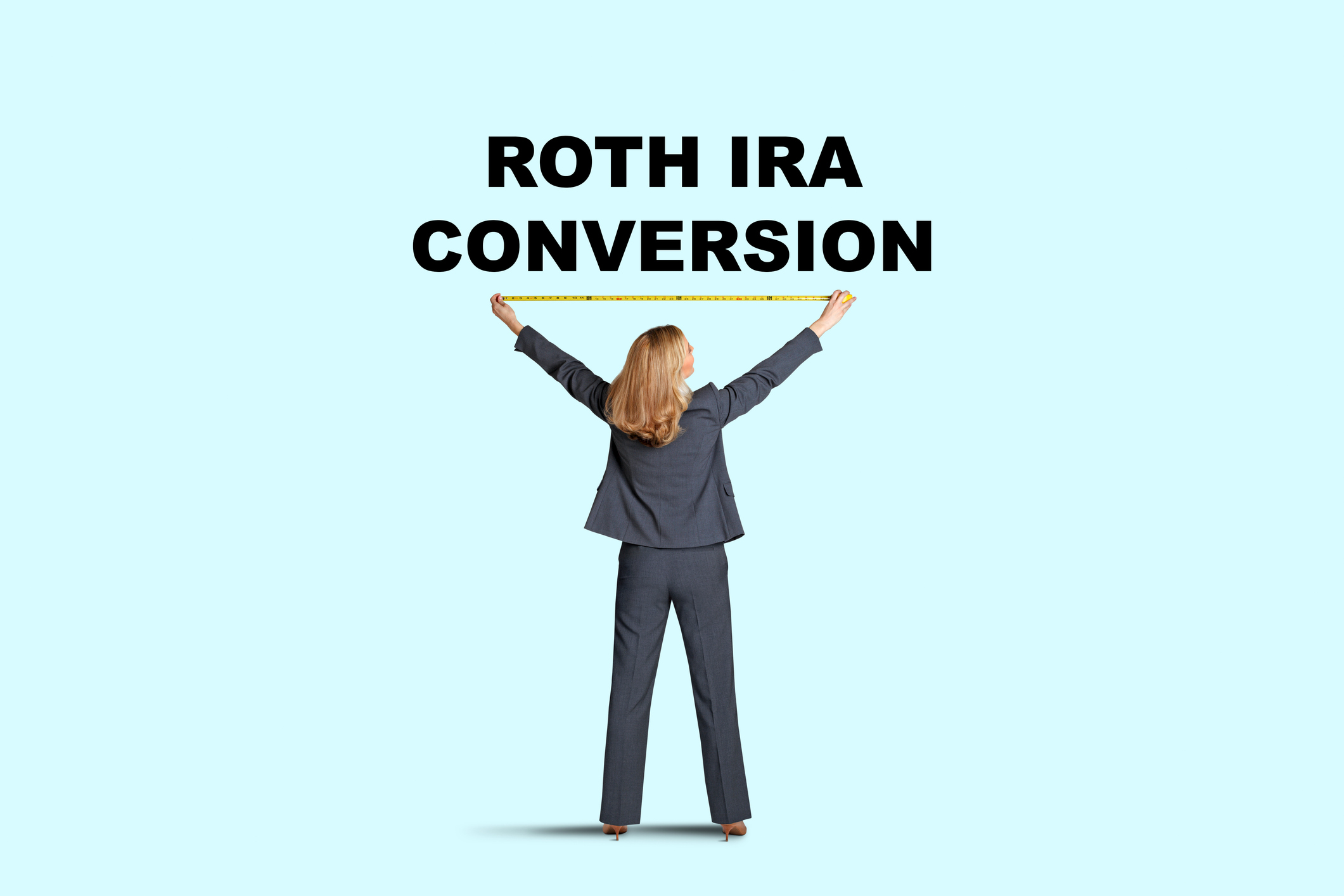IRA Conversion to Roth: Rules to Convert an IRA or 401(k) to a Roth IRA
An IRA conversion to Roth can give you a leg-up in retirement with tax-free income. But proceed with caution.


An IRA conversion to Roth is a popular pre-retirement or early retirement move. Roth IRAs offer several benefits that traditional retirement plans don’t. Not only are investment gains in a Roth IRA tax-free, but withdrawals are tax-free, as well.
Just as important, Roth IRAs don’t require savers to take required minimum distributions (RMDs) such as traditional IRAs and 401(k)s do. This allows Roth IRA holders to benefit from tax-free gains indefinitely, and to use their retirement accounts to pass wealth to younger generations.
However, because higher earners are barred from making direct contributions to a Roth IRA, some people find themselves in a position in which they need to convert a traditional IRA or 401(k) to a Roth IRA after the fact. The process of doing so is fairly simple, but it’s essential to get the timing of those conversions just right.
From just $107.88 $24.99 for Kiplinger Personal Finance
Become a smarter, better informed investor. Subscribe from just $107.88 $24.99, plus get up to 4 Special Issues

Sign up for Kiplinger’s Free Newsletters
Profit and prosper with the best of expert advice on investing, taxes, retirement, personal finance and more - straight to your e-mail.
Profit and prosper with the best of expert advice - straight to your e-mail.
IRA conversion to Roth from traditional accounts
If you have a traditional IRA, converting it can be a straightforward process of contacting the financial institution holding the account and completing the necessary paperwork. With a 401(k), things could get a touch more complicated, but not unreasonably so.
Many 401(k) plans allow direct rollovers to a Roth IRA. If not, you might need to open a traditional IRA, get a check for your 401(k) balance, and roll the money into an IRA within 60 days. Once your traditional IRA is funded, you can initiate a Roth conversion.
Another option, if you have a 401(k), might involve an "in-plan conversion," which means converting your traditional employer retirement plan to a Roth, then moving those funds into an IRA.
You should know that a Roth IRA conversion is a taxable event. The sum you move triggers a tax bill for the year in which you make the conversion. That means you must plan ahead for these taxes.
You should also know that there's a five-year waiting period for withdrawing converted Roth IRA funds to avoid a 10% penalty. However, that rule doesn't apply to the principal sum converted — only gains. It also doesn't apply once you turn 59½. At that point, you’re entitled to penalty-free withdrawals from any tax-advantaged retirement account you have.
Who benefits from a Roth IRA conversion?
People who expect to be in a higher tax bracket in retirement than during their working years can commonly benefit from a Roth IRA conversion. But there’s more to the story.
Bryan Bell, CFP®, ChFC®, is a vice president, senior investment adviser and regional director at First Horizon who says that Roth conversions can be especially useful for people who work in cyclical industries.
“Mortgage brokers and real estate agents, for instance, tend to go through feast-or-famine years,” he explains. “As such, we advise them to make maximum contributions to their retirement plans during feast years and then do a Roth conversion in famine years.”
Like Bell, Brian Schmehil, managing director, wealth management at The Mather Group, LLC, says that Roth conversions are optimal for people who suddenly find themselves in a lower tax bracket.
“A Roth conversion may be wise if you’re transitioning from filing jointly to single due to a divorce or widowhood,” he says.
Doug Carey, CFA and president of WealthTrace, agrees and says the key is to focus on what your taxes look like now vs later.
“I have found that people who retire in their early to mid-50s, do not have a pension, and have very little taxable income from investments are prime candidates for a Roth conversion,” he says.
Timing a Roth IRA conversion
Because Roth IRA conversions are taxable events, it’s crucial to get the timing right. Natasha Howe, wealth manager and vice president at Siebert Financial, says the best time to do a Roth conversion is towards the end of any year in which you've received the least amount of taxable income.
“The reason why you should wait to do it towards the end of the year is because at that point you will have a better sense of your total projected income, which ultimately determines which tax bracket you fall into for that specific year,” she explains.
Carey also says that generally speaking, the sooner you can start converting, the better, provided you have a lower income tax rate than you expect to have in the future.
“By starting earlier, you allow the benefits of the Roth IRA tax treatment to compound over time,” he explains. To this point, Carey notes that the longer your life expectancy, the more valuable a Roth conversion becomes.
As he explains, there’s a break-even amount of time before the conversion becomes beneficial due to the immediate tax bill it triggers. “You need time for the tax benefits to offset the upfront costs,” he says.
Carey also thinks it’s wise to consider spreading Roth conversions out over time to avoid jumping into a higher federal income tax bracket.
Bell, meanwhile, suggests paying attention to the stock market when a Roth conversion is on the table.
“Consider making a conversion when the market is down,” he says. “The strategy is to convert and pay taxes when the balance is relatively low and then let it grow back tax-free.”
Schmehil also warns that you must consider how your Roth conversion could impact your Medicare costs. Higher earners are subject to income-related monthly adjustment amounts, or IRMAAs, which drive up Part B and D premiums based on your modified adjusted gross income from two years earlier.
"If you're under 63 and planning to enroll in Medicare at 65, Roth conversions might be beneficial since you won’t yet face IRMAA surcharges," he explains. Otherwise, be cautious, as a Roth conversion could leave you paying more for Medicare, at least initially.
The OBBB complicates things a bit
The passage of the One Big Beautiful Bill (OBBB) has introduced changes that could make Roth conversions more complicated, warns Schmehil.
"Instead of merely converting up to a certain income tax bracket or being mindful of IRMAA income levels, you now need to be aware of losing the additional $6,000 deduction for seniors over 65, with phaseouts beginning at $75,000 for singles and $150,000 for married couples," he explains.
Schmehil also warns people thinking of a Roth conversion to keep the new SALT cap rules in mind.
"There is an increased SALT cap of $40,000 for both single and joint filers, but it begins to phase out at $500,000 MAGI," he explains. "Staying below these income thresholds may make sense in certain circumstances, even if it means converting less in a given tax bracket."
If the OBBB makes a Roth conversion less appealing, Schmehil says there are ways to soften the potential tax blow from RMDs in a traditional IRA.
"As long as you plan to make qualified charitable distributions to offset most, if not all, of your RMDs, there’s no need to do Roth conversions just to pay taxes to the government, which could have been avoided altogether if the money was directed to charity," he insists.
All told, says Schmehil, there needs to be a compelling upside for a Roth conversion to pay off.
"Conversions only make sense if you’re achieving some form of tax arbitrage, meaning paying less now to avoid higher taxes in the future," he concludes. "Estate taxes and Medicare premium increases are also part of this consideration."
Read More
Profit and prosper with the best of Kiplinger's advice on investing, taxes, retirement, personal finance and much more. Delivered daily. Enter your email in the box and click Sign Me Up.

Maurie Backman is a freelance contributor to Kiplinger. She has over a decade of experience writing about financial topics, including retirement, investing, Social Security, and real estate. She has written for USA Today, U.S. News & World Report, and Bankrate. She studied creative writing and finance at Binghamton University and merged the two disciplines to help empower consumers to make smart financial planning decisions.
-
 Verizon’s 4-Line Phone Promo Offers Strong Value for Families Upgrading to Premium Devices
Verizon’s 4-Line Phone Promo Offers Strong Value for Families Upgrading to Premium DevicesFamilies can upgrade to top-tier smartphones for $25 a line with Verizon’s newest offer.
-
 Where to Store Your Cash in 2026
Where to Store Your Cash in 2026Set yourself up for success with these strategies.
-
 How Much Income You Really Need to Afford a $500,000 Home
How Much Income You Really Need to Afford a $500,000 HomeAs home prices increase, the income needed for a house is also climbing. We break down what you need to earn to afford a $500,000 home.
-
 The 'Best of Both Worlds' Rule of Retirement Spending
The 'Best of Both Worlds' Rule of Retirement SpendingIt's the 4% rule on steroids. Here's what it is and why it may work for you.
-
 Don't Let the Court Decide: Test Your Knowledge on Avoiding Probate
Don't Let the Court Decide: Test Your Knowledge on Avoiding ProbateQuiz Test your basic understanding of why having a estate plan is crucial to avoiding probate in our quick quiz.
-
 Your Year-End Tax and Estate Planning Review Just Got Urgent
Your Year-End Tax and Estate Planning Review Just Got UrgentChanging tax rules and falling interest rates mean financial planning is more important than ever as 2025 ends. There's still time to make these five key moves.
-
 7 Dr. Seuss Quotes Retirees Should Live By
7 Dr. Seuss Quotes Retirees Should Live ByYou're off to great places! Why Dr. Seuss is the retirement guru you didn't know you needed.
-
 Past Performance Is Not Indicative of Your Financial Adviser's Expertise
Past Performance Is Not Indicative of Your Financial Adviser's ExpertiseMany people find a financial adviser by searching online or asking for referrals from friends or family. This can actually end up costing you big-time.
-
 I'm Retired and Want to Give My 3 Grandkids $5,000 Each for Christmas, But Their Parents Don't Want Them to Spend It All.
I'm Retired and Want to Give My 3 Grandkids $5,000 Each for Christmas, But Their Parents Don't Want Them to Spend It All.You're comfortably retired and want to give your grandkids a big Christmas check, but their parents are worried they might spend it all. We ask the pros for help.
-
 I'm a Financial Planner: If You're Not Doing Roth Conversions, You Need to Read This
I'm a Financial Planner: If You're Not Doing Roth Conversions, You Need to Read ThisRoth conversions and other Roth strategies can be complex, but don't dismiss these tax planning tools outright. They could really work for you and your heirs.
-
 Could Traditional Retirement Expectations Be Killing Us? A Retirement Psychologist Makes the Case
Could Traditional Retirement Expectations Be Killing Us? A Retirement Psychologist Makes the CaseA retirement psychologist makes the case: A fulfilling retirement begins with a blueprint for living, rather than simply the accumulation of a large nest egg.